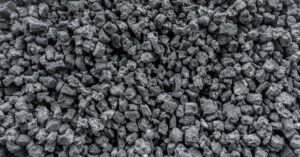
In January-November this year, Ukraine increased imports of coke and semi-coke in physical terms by 2.05 times compared to the same period last year, up to 622.694 thousand tons.
According to statistics released by the State Customs Service (SCS) on Monday, coke imports in monetary terms increased by 87% to $222.891 million over the period.
Imports were mainly from Poland (84.90% of supplies in monetary terms), Colombia (8.18%) and Hungary (2.85%).
For 11 months of the year, the country exported 1.593 thousand tons of coke for $366 thousand to Moldova (99.73%) and Latvia (0.27%), while in January, March, October and November 2024 there were no exports, while for 11 months of 2023 exports amounted to 3.383 thousand tons for $787 thousand.
As reported, in 2023, Ukraine reduced imports of coke and semi-coke in physical terms by 8.5% compared to 2022 – to 328.697 thousand tons, while imports in monetary terms decreased by 25.8% to $129.472 million.
In 2023, Ukraine exported 3,383 thousand tons of coke, down 12.3% compared to 2022. In monetary terms, it decreased by 22.2% to $787 thousand.
Exports were carried out to Moldova (100% of supplies in monetary terms), while imports came mainly from Poland (88.47%), Colombia (7.72%) and the Czech Republic (3.15%).

Imports of trucks to Ukraine in January-November 2024 increased by 28.8% in monetary terms compared to the same period in 2023, to EUR834.6 million, according to statistics from the State Customs Service.
According to the data released on Monday, most of the trucks were imported from Poland – for EUR169.25 million (or 20.28% of the total import structure of such vehicles), which is 89% more than a year earlier.
Cars worth EUR103.82 million (12.4%) were imported from France, which is 25% more than in January-November 2023, and EUR90.18 million from the United States. A year earlier, the top three truck exporting countries were Poland (13.8% of total truck imports), Korea (13.5%) and France (12.8%).
Imports from other countries increased by 21.5% to EUR 471.3 million during this period.
At the same time, according to statistics, in November, Ukraine imported trucks worth EUR75.8 million, compared to EUR59.4 million in the same month last year.
Over 11 months, Ukraine exported trucks worth EUR 2.9 million, mainly to Moldova (37.4% of exports of such vehicles), Poland (15.18%) and Kazakhstan (12.6%), while a year earlier, their exports amounted to EUR 3.87 million, mainly to Armenia (32.3%), Romania (25.7%) and Turkey (16.4%).

In November 2024, Turkey overtook Spain, the unchallenged leader, in imports of Ukrainian corn, Dmytro Solomchuk, MP, member of the Committee on Agrarian and Land Policy, said on Facebook.
“In terms of physical weight, the figures are significant – 2.5 million tons of exports in November, of which 620 thousand tons were bought by Turkey,” he wrote.
The MP noted that in November, a total of $2.3 billion worth of agricultural products were exported, of which only $512 million was corn.
As reported, on October 10, 2024, Turkey introduced quotas on imports of 1 million tons of corn and reduced the duty to 5% by the end of December 2024.

In November 2024, Ukraine remained a net importer of electricity, but its total imports decreased by 9% compared to October – to 165 million kWh, D.Trading LLC reported.
According to its analytical report provided to the Energoreforma portal, most of the electricity was imported to Ukraine from Slovakia (55.5 million kWh). Poland ranks second (41.4 million kWh), Hungary third (33.3 million kWh), followed by Romania (28.6 million kWh) and Moldova (6.1 million kWh).
The largest volume of electricity imports per day was on November 1 – 12 million kWh, or more than 4% of total electricity consumption in Ukraine.
According to the company, in November, as in October, imports did not reach the maximum technically permitted capacity of 1700 MW, reaching only 1300 MW in the evening peak.
“In general, the utilization of the offered cross-section fell to 42% (in October it was 72%). But at the same time, the volume of the offered crossing was 54% higher than in October – 390.7 million kWh. The interconnection with Hungary was used by 24%, with Poland – by 87%, with Romania – by 31%, with Slovakia – by 64%, with Moldova – by 27%,” the report says.
According to the company’s estimates, last month, imports, taking into account all costs, were economically feasible in only 20% of hours from Hungary (145 hours), Romania (142 hours) and Slovakia (136 hours). From Poland, imports were reasonable in 35% of all hours (254 hours).
“D.Trading notes that the main factors behind the dynamics of electricity imports during the month were deteriorating weather conditions, which led to an increase in consumption; high spot prices in neighboring EU countries caused by increased demand; shelling of energy infrastructure, which led to the renewal of restrictions; business demand for imported electricity after the restrictions were lifted.
According to the company’s analysts, in the first decade of November, imports fell from the initial level of more than 10 million kWh per day to 1-3 million kWh/day. They attribute this to a significant increase in prices on the spot markets of European countries due to the almost complete absence of renewable energy production and the growth of consumption to an excessive level.
According to D.Trading, in Hungary alone, consumption at the beginning of the month was more than 10% higher than normal for this period of time, and scheduled repairs at the Kozloduy NPP unit (Bulgaria) further worsened the situation with the balance of Southeast European countries.
At the same time, the high load on power lines due to increased consumption also led to restrictions on interstate electricity transfers.
At the same time, prices on the Ukrainian day-ahead market (DAM) were significantly lower than European prices due to price restrictions.
Analysts point out that imports continued to remain at a very low level until November 17, when massive shelling of the energy infrastructure took place.
“The restrictions imposed on industrial consumers after that increased business demand for imported electricity. Due to the extremely high prices in Europe, businesses did not use the import quota at the maximum possible level, so import growth in the last decade of November was only up to about 10 million kWh per day,” D.Trading describes the situation.
As reported, electricity imports in October decreased by 58% compared to September and became the lowest figure since March 2024.
The full report will soon be posted on the Energoreforma website https://reform.energy/.

In 2023, the European Union imported 339.8 thousand tons of spices from non-member countries, according to the EU Statistical Office (Eurostat).
Over the past ten years, imports have increased by 44%.
Last year, China was the main supplier of spices, accounting for 39% of the total supply to the European Union, the report said.
The most popular spice was ginger (114 thousand tons), followed by paprika (110.6 thousand tons) and pepper (50.3 thousand tons). China was the main country of supply for ginger (43%) and paprika (73%), while pepper was mostly purchased from Vietnam (63%).
Turmeric ranked fourth (16 thousand tons), with the bulk of imports coming from India (79%). Cinnamon was in fifth place (13.3 thousand tons), with Vietnam accounting for more than a third of the supply (37%).
Over the past ten years, imports of turmeric and ginger have increased most significantly – by 2.4 times and 2.1 times. At the same time, purchases of pepper abroad decreased by 11%.

The harvest this year was far from planned, so Ukraine had to increase the supply of some vegetables. The volume of imports of potatoes has increased significantly, but other vegetables dismantle quite the opposite dynamics, writes SEEDS.
This was told by Bogdan Dukhnitsky, senior researcher of the Department of Agricultural Production Economics and International Integration of the National Research Center Institute of Agrarian Economics during the conference VeggiFruits. Processing of vegetables and fruits.
“According to the results of 10 months of 2024, there was a decrease in the value volumes of vegetable supplies to Ukraine, which affected their quantitative volumes. At the same time, imports of fruits and berries by their total value remained at the level of 2023.
As for the dynamics of import purchases for the first 10 months of 2024, in the vegetable group it is noteworthy that, although relatively insignificant, but from the base of last year there was an increase of 90% of potato purchases. This is due to the fact that the current year’s crop was far from the projected one.
While the rest of the vegetable items, which we had as a typical staple – onions, garlic, carrots, cabbage and cucumbers), are now showing a significant decline in imports. This is due to the fact that partly due to re-location and deformatization of specialization many enterprises managed to compensate for the significant decline, which we had in 2022,” – said the expert.
According to the expert, according to the results of January-October of this year, the geographical structure of vegetable supplies to Ukraine has a clear leader – it is Turkey. Also large in value volumes of supplies come to Poland and the Netherlands.
“In Ukraine, the standard production volume of all vegetables is about 10 million tons. In 2022, for obvious reasons, production fell significantly, it was 7.5 million tons. That is, 25% of the typical supply was not on the market. In 2023, Ukraine already produced more than 8 million tons of vegetables, and partially this demand was compensated.
Since 2022, as a result of a serious increase in import demand, vegetables were added to the key items in foreign purchases. This was also one of the reasons why in 2022 vegetables in Ukraine showed the largest price increase – plus 68%. This was the most expensive category. However, in contrast to them, fruits were on the list of the most expensive products, and remained there in 2023″, – says Bohdan Dukhnitsky.
In his opinion, in the next year, 2025, due to the existing circumstances, there is a high probability that the market in general will remain uncertain and high risks.
“Due to the fact that according to the results of this year’s harvest there was a significant decrease in quantitative and qualitative parameters for such positions as cabbage, apples, grapes, potatoes and some others, the need to import them remains and this also entails high prices. However, not specifically all these items in significant volumes. For example, for potatoes prices are now on average twice as high as they were a year ago.
However, despite all these circumstances, the supply in the domestic market of Ukraine, in its absolute majority still in the fruit and vegetable segment, in general and for specific products, primarily growing due to the natural and climatic features of our country, will be formed in the absolute majority of its own production, “ – said the expert.
Source: https://www.seeds.org.ua/ukraine-prishlos-uvelichit-import-kartofelya-na-90/